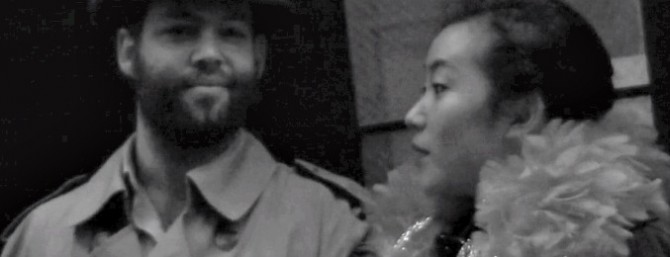She's a very special lady!
Based on the Italian for “the woman in love,” the term inamorata is most often used for the female leading role in romantic comedies, but it’s also used for heroines of grand opera and Shakespearean tragedies. Love stories sell tickets, and actresses covet starring roles based on this flexible stage type. She may be very young, or not so young, rich or poor, a working girl or an empress, and any ethnicity imaginable. The middle-aged Cleopatra is an inamorata, and so is the young Eliza Doolittle of My Fair Lady.
In fact, despite this complexity and range, all inamoratas have some features in common. Lovely, spirited, outspoken, and emotionally volatile, she is more than a match for her lover -- or lovers. Sometimes she may go crazy as she pursues love, or flees from it; as the plot thickens she might dress as a man, woo a woman, attempt suicide, or kill a lover or an enemy. (For these reasons the term is broader than “ingénue,” which applies only to the innocent and naïve young girl.) Plays about love and sex go back to the Greeks (think Lysistrata and Medea) but the kind of “woman in love” we see in Shakespeare’s witty Beatrice or poetic Juliet first appeared as a new stage type in Renaissance Italy, when actresses first began to play women in the companies of the commedia dell’arte in the 1560s. Before the first actresses arrived these troupes were composed of zany masked clowns, collaborating to create comedies by improvising, making it seem spontaneous even when they used memorized material. Brilliant comedy teams carried their tradition into modern times – the Marx Brothers and Seinfeld are shining examples.
But by adding the unmasked Lovers, the professional troupes were able to add romance and pathos to their menu, devising new romantic comedies, along with pastorals, tragicomedies and tragedies, gaining fame and royal patrons beyond Italy – all because of the revolutionary advent of actresses playing a new kind of inamorata. The best actresses became the first female stars on the Western stage, applauded for their ability to delight audiences and make them laugh, and to deliver stirring laments and death scenes that made them weep. The actress-inamorata was the true innovation and the biggest draw; the inamorato (male lover) strove to match her, but generally followed her lead.
Isabella Andreini (1562-1604), often called the greatest Renaissance actress, was a prodigy who helped shape the inamorata type in the late sixteenth century. A published playwright, poet, and intellectual praised by the academy and patronized by French royalty and Italian dukes, Andreini was also a celebrated singer and musician, and could hold forth in a mélange of languages. Her versatility in all genres helped change and expand the inamorata role, making the part central to many plays performed by the commedia dell’arte. News about the Italian players and their actresses reached England, and Italian players crossed the Channel to perform for popular audiences and for Queen Elizabeth, sparking a trend for plays with stunning Italian-style inamoratas. Shakespeare jumped on board when he began to write plays for the English stage, in which all women’s parts were played by boys and youths, aged about 12 to 21. Exploiting the crowd-pleasing potential of the glamorous inamorata, he leaned on his boy players to create some of the greatest female roles in theater, including Juliet, Beatrice, Rosalind, Viola, Portia, Ophelia, and Cleopatra.
Compared to the female roles that were the norm just twenty years earlier, these parts are far longer and more active, more complex emotionally, and more demanding to play. A prime example is Juliet in Romeo and Juliet. Shakespeare makes her a witty improviser of poetry and the instigator of her own secret wedding; she delivers the most sublime erotic poetry in the play; and as befits a tragic heroine, she breaks hearts as she faces terror and fakes her own death, only to revive in the tomb and stab herself in earnest. In a very real sense the Shakespearean inamorata of comedy and tragedy that has come down to us today is a Renaissance invention: a joint creation of the all-male stage of England and the dual-gender popular stage of Italy, which produced the actresses who put their stamp on the type. In the dramatic story of the inamorata, both Isabella Andreini and William Shakespeare play their parts.
Pamela Allen Brown, Associate Professor of English, University of Connecticut Written and directed by Professor Pamela Allen Brown, Univ. of Connecticut

